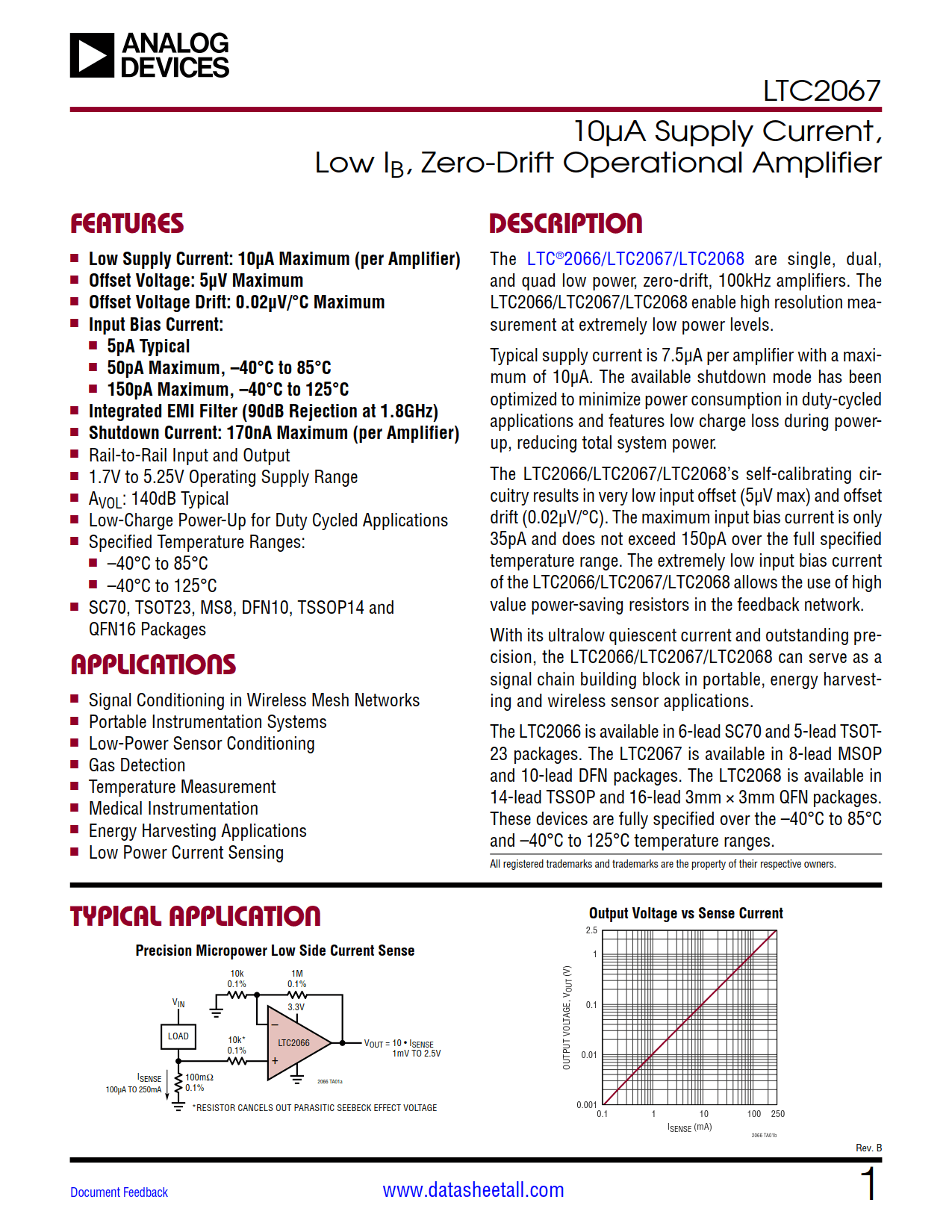
LTC2067 Datasheet
Dual 10μA Supply Current, Low IB, Zero-Drift Operational Amplifier

Dual 10μA Supply Current, Low IB, Zero-Drift Operational Amplifier
| Part No. | In Stock | Price | Packaging | SPQ | Marking | MSL | Pins | Temp Range | Package Description |
The LTC2067 are dual low power, zero-drift, 100kHz amplifiers. The LTC2067 enable high resolution measurement at extremely low power levels.
Typical supply current is 7.5μA per amplifier with a maximum of 10μA. The available shutdown mode has been optimized to minimize power consumption in duty-cycled applications and features low charge loss during powerup, reducing total system power.
The LTC2067’s self-calibrating circuitry results in very low input offset (5μV max) and offset drift (0.02μV/°C). The maximum input bias current is only 35pA and does not exceed 150pA over the full specified temperature range. The extremely low input bias current of the LTC2067 allows the use of high value power-saving resistors in the feedback network.
With its ultralow quiescent current and outstanding precision, the LTC2067 can serve as a signal chain building block in portable, energy harvesting and wireless sensor applications.
The LTC2067 is available in 8-lead MSOP and 10-lead DFN packages. These devices are fully specified over the –40°C to 85°C and –40°C to 125°C temperature ranges.